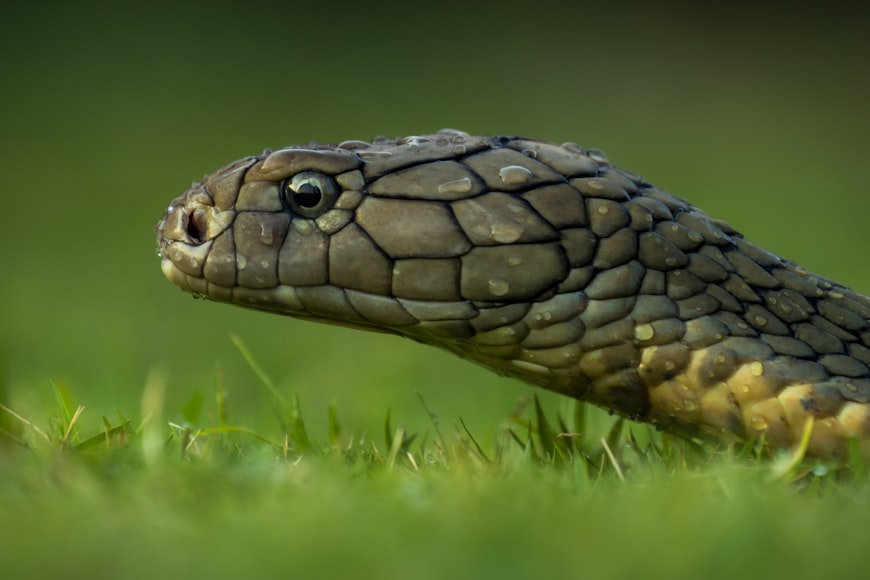One of the most important things you need to do as an ecotourist is to know what animals are dangerous so that you can avoid them, and so that you can be prepared in case they attack. There are many different kinds of dangerous animals out there, but we’ve narrowed it down to the top 10 most dangerous animals in the world! To put together this list, we asked experts what their picks were for the most dangerous animals out there, and picked our own list based on popular opinion and facts.
Puffer Fish

Scientists have determined that a single puffer fish can contain enough poison to kill 30 adult humans. While many animals, such as bees and scorpions, deliver their stingers into a victim, puffers unleash tetrodotoxin (TTX), which is 1,200 times more toxic than cyanide. While studies have shown that TTX does not affect most animals due to its complex molecular structure, for humans it is fatal in even small doses.
Box Jellyfish
The box jellyfish is arguably one of most dangerous sea creatures to have ever evolved. The reason for its notoriety comes from a collection of potent toxins called cnidocyst that resides in each of its tentacles, which is capable of killing an adult human within minutes. How can you tell if you’ve been stung by a box jellyfish? The answer is simple: your body will start to shut down, and there’s nothing you can do about it.
Green Mamba

The Green Mamba is considered to be one of Africa’s most dangerous snakes. It is also referred to as an Eastern Green Mamba or a Common Green Mamba, and has a wide range spanning from South Africa through Zimbabwe, Zambia, Tanzania and Mozambique. The venom of a green mamba snake can cause death in humans within 45 minutes if left untreated. Luckily, they are very shy creatures which usually don’t attack unless they feel threatened.
Saltwater Crocodile
The saltwater crocodile is found throughout Southeast Asia and northern Australia. It can grow up to 20 feet long and weigh as much as 2,000 pounds. Although they are protected in some areas, they are still one of the most aggressive predators on earth, especially when protecting their young or territory. They kill hundreds of people each year and have been known to lure their victims by lying motionless at the water’s edge before attacking.
King Cobra

The king cobra is a highly venomous snake that lives primarily in parts of Southeast Asia. It’s easily identifiable by its small, black crown on top of its head and generally grows to a length of 5–6 meters (16–20 ft). Its venom is one of the most potent of any known snake and can kill an adult human within 15 minutes if not treated immediately.
Asian Cobra
The Asian cobra is one of three poisonous snake species found on mainland Asia, which include common Indian cobras and king cobras. The venom of a cobra bite can have devastating effects depending on its size, but death can usually be avoided with proper treatment. Here’s why it’s regarded as one of planet earth’s most dangerous animals.
Bull Shark

There are few animals as dangerous as a Bull Shark, but you probably won’t run into one (thankfully). These sharks live in warm, shallow waters and their numbers have dwindled drastically due to fishing. But if you do find yourself face-to-face with one of these predators, there’s little hope for escape—their speed is astounding and they can easily tear apart humans or even boats. The Bull Shark is widely considered responsible for more fatal attacks than any other shark.
Cape Buffalo
The Cape buffalo is a large African bovine. This animal is considered to be very dangerous, especially when it is protecting its young or defending territory. A full-grown male can reach more than 2 meters (6.5 feet) and weigh more than 1,200 kilograms (2,600 pounds). It has a tendency to charge intruders, especially if there are calves nearby.
Rattlesnake

As one of nature’s most toxic creatures, rattlesnakes are considered some of the most dangerous animals on Earth. These snakes are indigenous to North America and South America and can vary greatly in size. They have slit-like pupils, vertical pupils, or round pupils and range from shades of black to brown to a vibrant orange. Despite their sharp teeth and thick scales, rattlesnakes are surprisingly quiet – which is why they earned their nickname.
Mosquito
If you’re allergic to mosquito bites, simply standing outside can cause trouble. Mosquitoes are responsible for hundreds of thousands of deaths each year—spread disease such as malaria, dengue fever, yellow fever and chikungunya. They also cause annoyance (the itch!). To make matters worse, they don’t really discriminate: women and children tend to be more affected than men due to their smaller body size.
